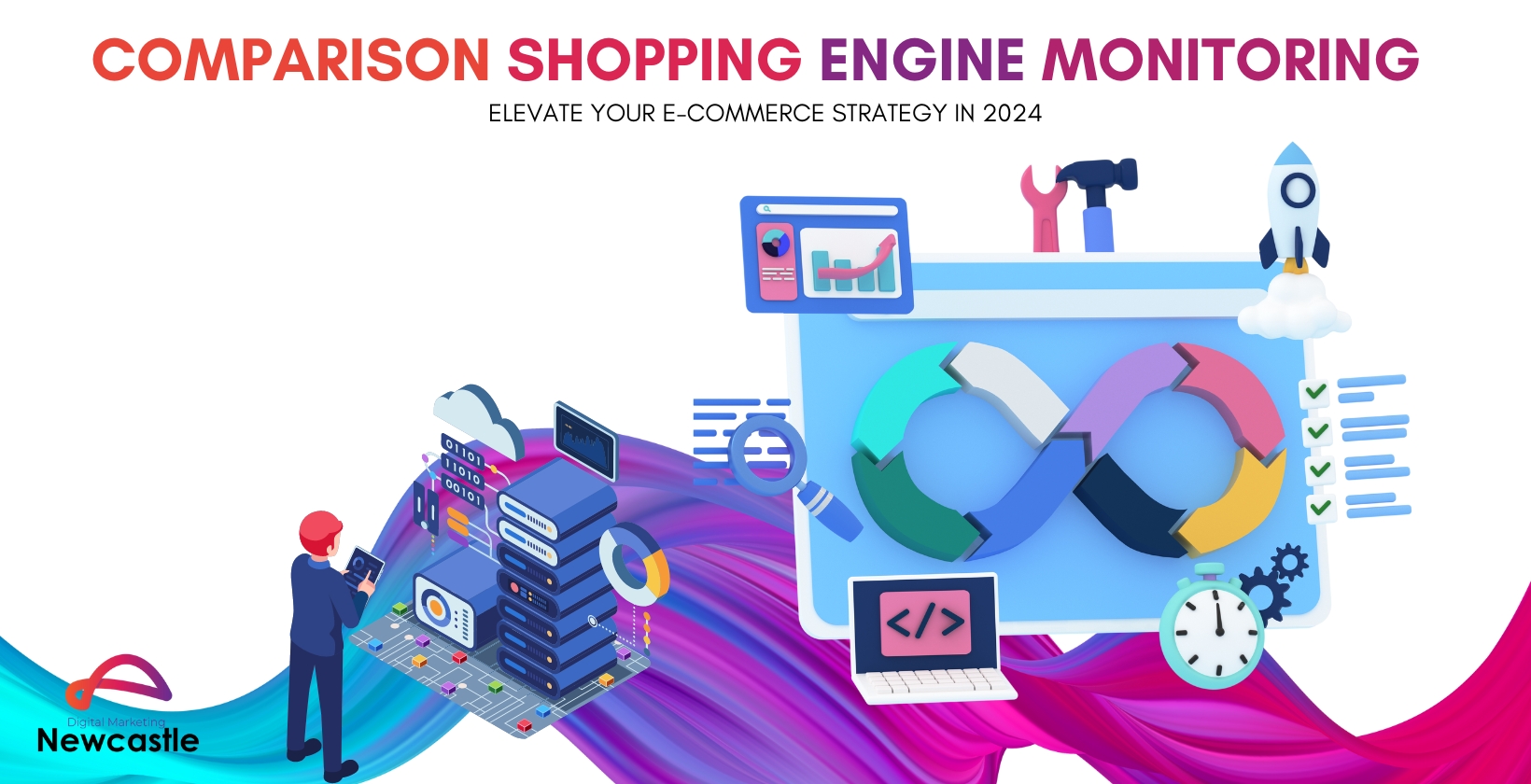In the dynamic world of e-commerce, maintaining a competitive edge is important for thriving.
Comparison Shopping Engine Monitoring emerges as a key strategy to achieve this.
It lets you track and analyse how your products fare against competitors on various shopping platforms.
This overview delves into Comparison Shopping Engine Monitoring, its significant benefits, potential risks if neglected, and strategies to enhance your e-commerce tactics.
You’ll learn how this tool boosts visibility and traffic, sharpens your pricing strategies, and deepens customer insights.
By embracing effective monitoring tools, you can optimise product listings, adjust pricing dynamically, and enhance the overall customer experience—fundamental steps to securing a strong market position and ensuring customer satisfaction and loyalty.
Why is Comparison Shopping Engine Monitoring Important for E-commerce Strategy?
Monitoring comparison shopping engines plays a pivotal role in enhancing e-commerce strategies. These platforms reveal customer preferences, identify market shifts and benchmark competitive pricing.
Such insights assist brands in adapting quickly to market changes and maintaining a competitive edge. As businesses strive to optimise their online presence, the importance of staying informed about the tools and techniques for tracking these platforms grows, especially when considering the broader implications for digital strategy.
What is Comparison Shopping Engine Monitoring?
Comparison Shopping Engine (CSE) monitoring scrutinises data from various price comparison engines to refine e-commerce strategies and ensure competitive product pricing.
This involves tracking product prices, availability, and performance metrics across diverse platforms. By extracting and analysing this data, e-commerce entities can adjust their pricing strategies effectively to remain competitive.
For instance, a retailer might analyse their product placements on Google Shopping compared to their competitors and revise their pricing models accordingly.
Platforms like Shopzilla and PriceGrabber also very shape consumer behaviours and purchasing decisions. By consistently observing and analysing trends on these sites, businesses can adjust their marketing strategies to improve their online visibility.
This proactive approach supports better decision-making and sets the stage for further exploration into the intricacies of monitoring mechanisms that maintain business competitiveness in the bustling online marketplace.
How Does Comparison Shopping Engine Monitoring Work?
Comparison Shopping Engine Monitoring captures and consolidates real-time data on product listings, prices, and other relevant details from various sources, assisting e-commerce businesses in refining their strategies.
This system analyses vast data, including pricing fluctuations, competitor tactics, consumer preferences, and market needs. By deploying advanced analysis tools, it swiftly extracts essential insights to guide strategic decisions.
These insights help businesses adjust pricing, tailor product selections, enhance marketing efforts, and effectively respond to market trends.
Understanding these strategic adjustments invites further inquiry into how such monitoring can bolster business outcomes. We’ll analyse how these insights translate into tangible benefits, shaping a more competitive stance in the marketplace.
What Are the Benefits of Comparison Shopping Engine Monitoring?
Monitoring comparison shopping engines offers numerous benefits such as a better understanding of competitors, improved pricing strategies, increased visibility and traffic, and enhanced customer insights.
Better Understanding of Competitors
Keeping an eye on comparison shopping engines enables e-commerce businesses to gain insights into their competitors’ pricing, promotions, and product offerings.
Competitive analysis plays a vital role in guiding marketing strategies and decision-making processes. By monitoring their rivals’ activities, companies can identify gaps in their offerings, assess the effectiveness of their pricing strategies, and discover potential expansion opportunities. Understanding competitors’ strategies helps businesses adapt and fine-tune their approaches to stay ahead. This ongoing surveillance not only aids in identifying market trends but also enables businesses to position themselves strategically to attract and retain customers.
Improved Pricing Strategy
By analysing data from comparison shopping engines, e-commerce businesses can refine their pricing strategies to better meet customer needs and stay competitive.
These data-driven insights give businesses the power to understand market trends, competitive pricing, and customer preferences. Leveraging price comparison engines, companies can identify optimal price points for their products, adjust pricing dynamically to match fluctuations in demand and optimise promotions to attract and retain customers.
This approach fosters a more responsive and customer-centric pricing strategy, ensuring that businesses are agile in adapting to changing market conditions while enhancing their profitability and market share.
Increased Visibility and Traffic
Optimising product listings based on data from comparison shopping engines can greatly increase a business’s visibility and traffic in search engines and online shopping platforms.
By analysing the performance metrics and consumer behaviour data provided by these comparison shopping engines, businesses can gain valuable insights into what resonates with their target audience.
This data can be utilised to fine-tune product descriptions, images, pricing strategies, and promotions, optimising listings for maximum impact.
Implementing targeted keywords, optimising titles and descriptions, and using high-quality images can all contribute to better search engine rankings and enhanced visibility.
Enhanced Customer Insights
Monitoring comparison shopping engines equips businesses with important insights into customer behaviour, enhancing their ability to adjust product suggestions effectively.
By scrutinising search terms, click-through rates, and buying patterns, companies can pinpoint trends and preferences within their target market. This analysis reveals which products attract attention, the features that trigger purchases, and the pricing most appealing to customers.
With this knowledge, businesses can refine their product selections, adjust pricing, and craft marketing strategies that better connect with consumers and improve sales conversion rates. Such vigilance also helps avoid potential pitfalls affecting a business’s competitive edge.
What Are the Risks of Not Monitoring Comparison Shopping Engines?
Failing to monitor comparison shopping engines poses several risks for e-commerce businesses, including:
- Missing out on potential customers
- Inaccurate pricing and product information
- Missed opportunities for optimization
Losing Out on Potential Customers
Businesses must monitor comparison shopping engines to avoid losing potential customers to competitors offering better prices and product visibility.
Staying competitive in the digital marketplace is important for any business striving to succeed. By effectively utilising comparison shopping engines, businesses can attract more customers, increase their online visibility, and enhance brand recognition.
Monitoring these platforms allows companies to stay informed about market trends, analyse the competition, and make data-driven decisions to improve their offerings.
Failing to monitor comparison shopping engines closely can result in missing valuable insights and growth opportunities, ultimately leading to a loss in potential sales and market share to more vigilant competitors.
Inaccurate Pricing and Product Information
Not tracking comparison shopping engines can lead to inaccurate pricing and product information, which erodes customer trust and sales.
When customers encounter incorrect pricing or misleading product details, they can be frustrated and disappointed. This can lead to brand credibility loss, as customers rely on accurate information to make informed purchasing decisions.
Inaccurate pricing affects immediate sales and can have long-term repercussions on customer loyalty and repeat business. When customers feel deceived, they are less likely to return for future purchases, impacting the company’s overall revenue and growth.
Missed Opportunities for Optimization
Ignoring comparison shopping engines can lead to missed optimization opportunities driven by evolving market trends and consumer preferences.
Monitoring your products’ performance on these platforms allows you to analyse critical metrics like click-through rates, conversions, and user engagement.
Such data offers insights into what appeals to potential customers. With this knowledge, you can adjust your product listings, pricing, and promotional tactics to attract your intended audience more effectively.
This strategic refinement paves the way for further enhancements in your online presence management, potentially transforming your broader e-commerce approach.
How Can Comparison Shopping Engine Monitoring Elevate Your E-commerce Strategy?
Comparison shopping engine monitoring can elevate your e-commerce strategy by identifying market trends and demands, allowing real-time adjustments to pricing and promotions, optimising product listings for better visibility, and ultimately improving customer experience and retention.
Identifying Market Trends and Demands
By analysing data from comparison shopping engines, businesses can identify emerging market trends and customer demands, allowing them to stay ahead of the competition.
This invaluable insight enables companies to adapt their strategies quickly, ensuring they offer products and services that resonate with their target audience. Sentiment analysis and social media monitoring further enhance this data-driven approach, providing a comprehensive view of consumer preferences and behaviours.
By monitoring competitor pricing strategies and product launches, businesses can proactively adjust their offerings to remain competitive. This proactive approach not only helps companies anticipate market shifts but also aids in creating more targeted marketing campaigns and enhancing overall customer satisfaction.
Adjusting Pricing and Promotions in Real-time
Real-time data from comparison shopping engines enables businesses to adjust pricing and promotions instantly in response to market changes.
By leveraging real-time data, companies can gain valuable insights into customer behaviour, demand trends, and competitor activities.
This ability to make quick, data-driven decisions allows businesses to stay ahead of the curve and capitalise on new opportunities.
In a fast-paced market environment, being able to adapt pricing strategies in real-time can mean the difference between winning or losing customers to competitors.
Optimising Product Listings for Better Visibility
Optimisation of product listings based on insights from comparison shopping engines can greatly improve visibility and search engine rankings.
One effective technique for enhancing product visibility and search engine rankings is keyword optimization. By strategically incorporating high-ranking keywords in product titles, descriptions, and tags, sellers can increase the likelihood of their products appearing in relevant search results. Optimising product images with descriptive file names and alt text can improve visibility in image search results.
Another important aspect of product listing optimisation is maintaining accurate and detailed product information. Providing comprehensive product descriptions, specifications, and features helps attract potential customers. It boosts search engine visibility, as search algorithms prioritise listings with informative content.
Improving Customer Experience and Retention
Monitoring comparison shopping engines empowers businesses to enhance the shopping experience, ensuring customers return for more personalised content and spot-on product suggestions.
By delving into data from these platforms, companies decode consumer likes, habits, and emerging trends, setting the stage for marketing strategies that hit the mark with curated offerings and promotions created just for their audience.
Advanced algorithms and machine learning automate product suggestions, aligning with individual customer profiles based on their browsing habits, purchase history, and demographic details.
This strategic personalization boosts sales prospects and builds customer loyalty and satisfaction, making shoppers feel recognized and valued.
As companies refine these strategies, their tools to monitor shopping engines become increasingly important. Next, we’ll examine what makes these tools effective and indispensable for savvy businesses.
What Are the Key Features to Look for in a Comparison Shopping Engine Monitoring Tool?
When selecting a comparison shopping engine monitoring tool, it is essential to look for key features such as:
- Real-time monitoring and alerts
- Competitor analysis and insights
- A customizable dashboard and reports
- Seamless integration with e-commerce platforms
Real-time Monitoring and Alerts
Real-time monitoring and alerts are vital features in a comparison shopping engine monitoring tool as they ensure timely data collection and responsiveness to market changes.
The ability to track and analyse data as it happens provides businesses with a competitive edge in today’s fast-paced market environment. With real-time monitoring, companies can instantly stay informed about pricing fluctuations, consumer trends, and competitor activities. This allows them to make informed decisions promptly, optimising their pricing strategies and marketing efforts in response to the most up-to-date information.
Competitor Analysis and Insights
A strong comparison shopping engine monitoring tool should provide comprehensive competitor analysis and insights to help businesses understand their market positioning.
Competitor analysis plays a vital role in businesses’ success. It allows them to gain valuable information about industry trends, consumer behaviour, pricing strategies, and more. By analysing competitors, businesses can identify gaps in the market, capitalise on untapped opportunities, and stay ahead of industry trends.
Insights from competitor analysis can inform strategic decisions such as product development, pricing adjustments, marketing strategies, and expansion plans.
Understanding competitors’ strengths and weaknesses can help businesses differentiate themselves, improve their offerings, and create a unique value proposition for their target audience.
Customisable Dashboard and Reports
A customisable dashboard and detailed reports allow businesses to visualise data effectively, enhancing user experience and decision-making processes.
Customisable dashboards allow users to customise the data display according to their needs and preferences. This feature enables businesses to focus on the most relevant metrics, leading to quicker insights and knowledge-based decision-making.
Dashboards present data in a visually appealing manner, making it easier for users to grasp complex information quickly. This enhances user experience and promotes better understanding and engagement with the data at hand.
Customisable dashboards are important in streamlining data visualisation and reporting processes, giving businesses the power to drive strategic planning initiatives effectively.
Integration with E-commerce Platforms
Integrating comparison shopping engine monitoring tools with e-commerce platforms is required, allowing automated data flows and more efficient operations.
These tools connect directly to e-commerce platforms, enabling the collection of real-time product details, prices, and stock levels. This direct connection not only boosts accuracy but also sidesteps the need for manual data input, diminishing the risk of errors and conserving time for businesses.
Through such automation, companies can easily track product listings, observe competitor pricing, and adjust pricing strategies swiftly to maintain competitiveness.
These enhancements in monitoring capabilities subtly lay the groundwork for further strategic insights, paving the way to appreciate the broader benefits these tools bring in optimising e-commerce strategies.
Wrapping Up: The Strategic Edge of Effective Comparison Shopping Engine Monitoring
Effective comparison shopping engine monitoring provides e-commerce businesses with a strategic edge, enhancing their ability to stay competitive, optimise pricing, understand market trends, and improve customer experience.
By monitoring various shopping engines, businesses can adjust their pricing strategies in real time based on competitor movements, ultimately driving more conversions and revenue.
Through detailed analysis of market trends and consumer behaviour, companies can customise their product offerings and marketing campaigns to match the evolving demands of the audience, leading to increased customer satisfaction and loyalty.
In essence, effective monitoring fuels short-term gains. It lays the foundation for long-term growth and sustained success in the dynamic e-commerce landscape.





